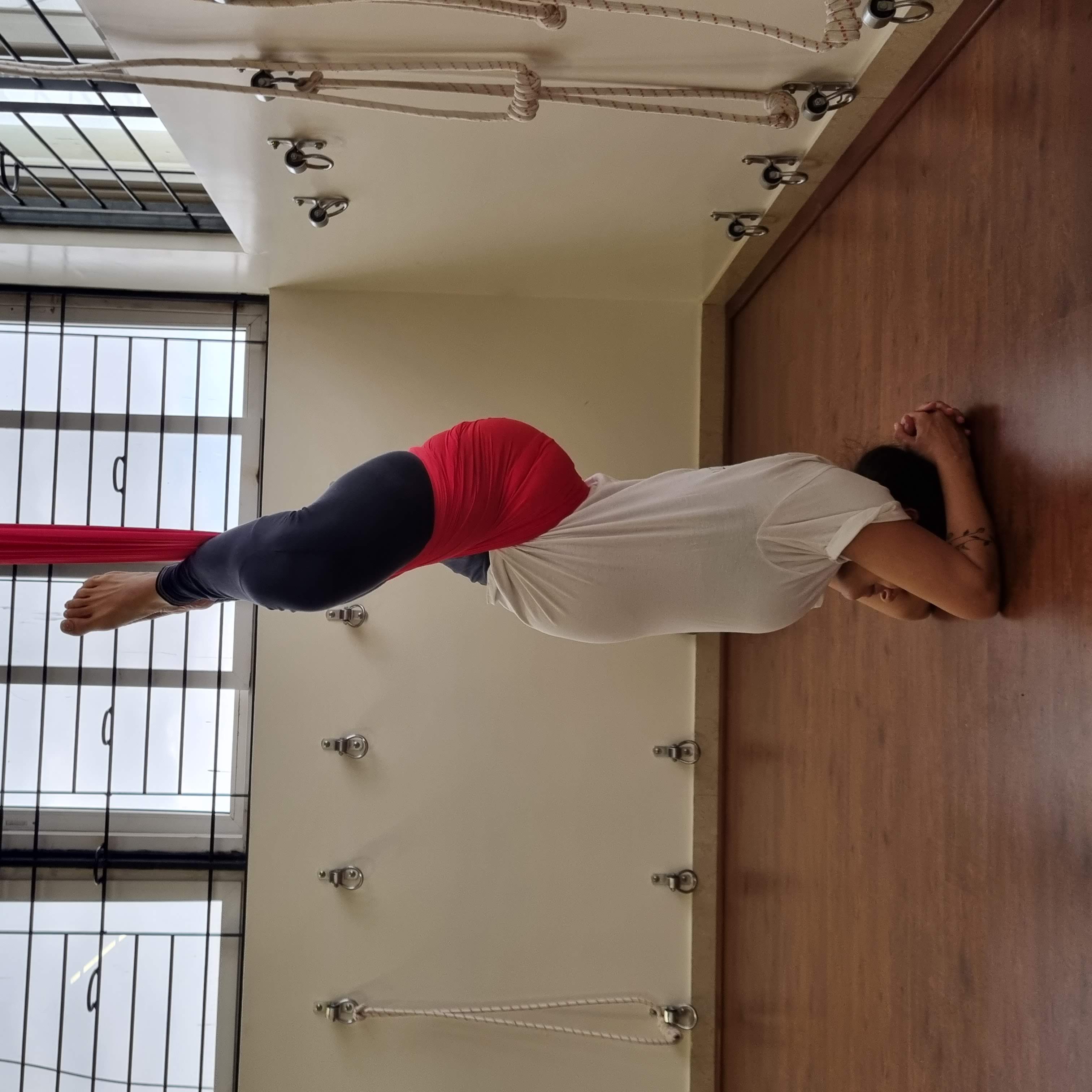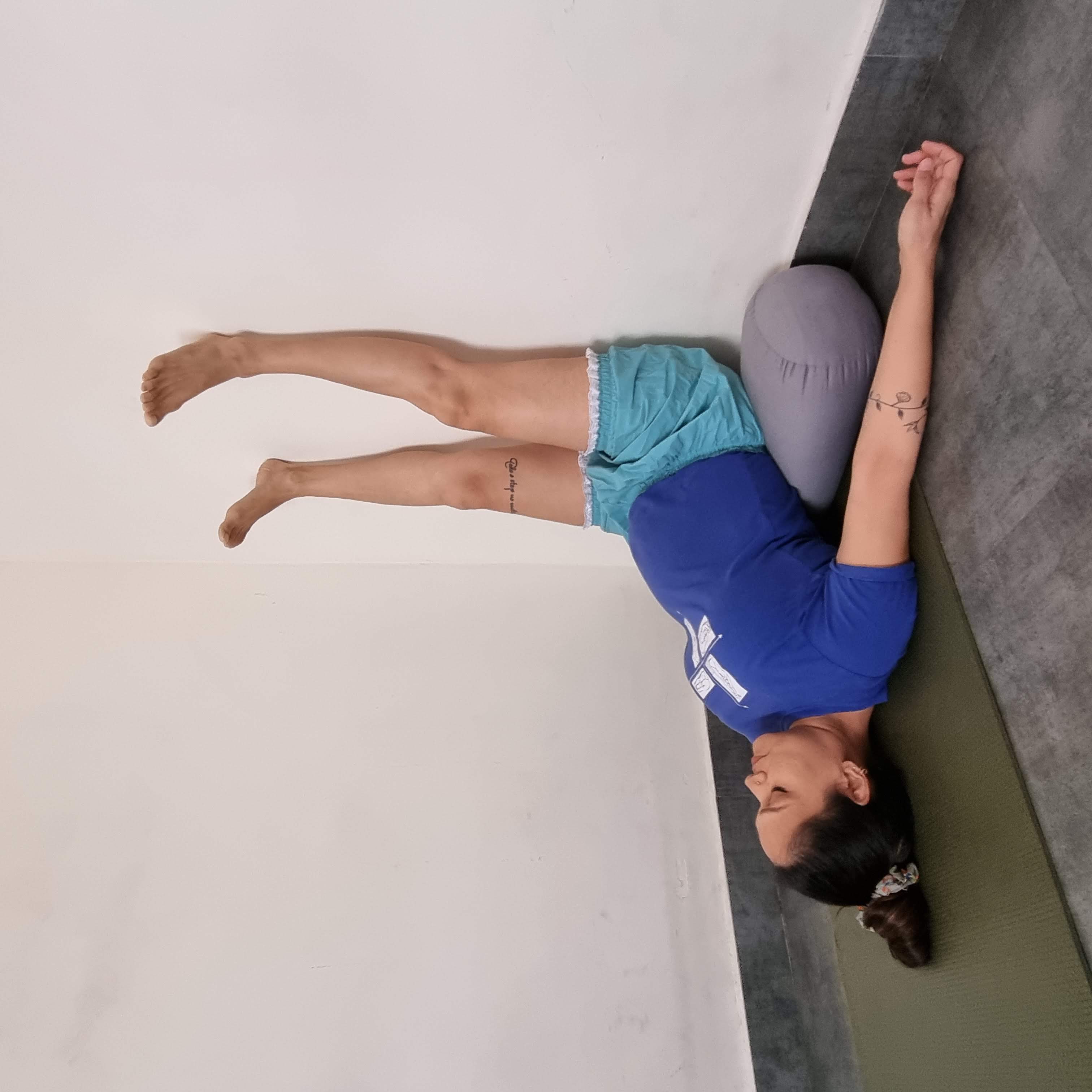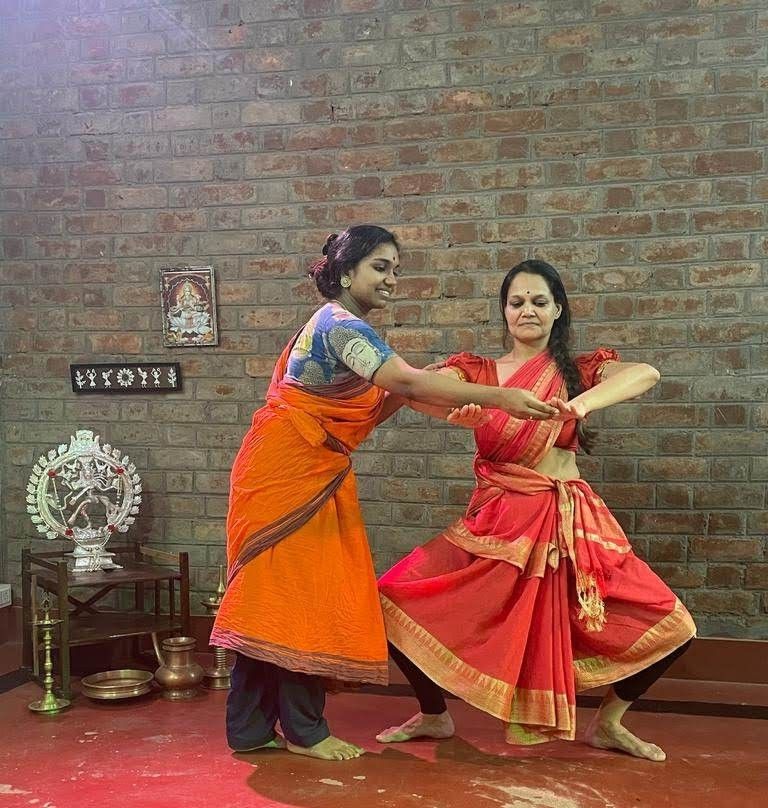Inversions During Pregnancy: What You Need to Know
When I started yoga I looked at the headstand with the longing of a noob. It seemed like an impossible pose and the pinnacle of physical acumen. I did my first headstand during my YIC at SVYASA, after about three years of yoga practice. Since then I’ve come a long way – progressively getting stronger and more confident in my practice. I didn’t know then that inversions like the sirsasana and sarvangasana would become the backbone of my prenatal yoga practice, but they did and today I teach these to other expecting mothers.
So should you practice inversions during pregnancy? The short answer is yes, but read on for all the details on when, how, and why they might work for you
My Inversion Practice During Pregnancy
Headstand and sarvangasana are an integral component of a daily Iyengar yoga practice. We practice these asanas using different props and work on mastering their variations. Here’s a video of me holding a headstand for 10 minutes, which is the length of time stipulated for an intermediate practitioner.
So when my teacher recommended sirsasana and sarvangasana during my conception routine, I was used to going upside down for long periods of time. However, during conception I had to work on the relaxing and restorative aspects of these two postures. I started exploring various props, and began to look at inversions as a way to rejuvenate my body and mind, rather than a way to strengthen my body and keep my skin glowing. Also, because I was a long-term practitioner, my teachers were confident that I knew how to keep an open pelvis in both of these postures – something that is crucial during the conception period.
Going Upside Down When I Was Pregnant
Once I conceived I was told to relax and be careful for the first three months, essentially the first trimester. And to be honest, I wouldn’t have been able to do something even if I wanted to. The fatigue was real, and I found out (almost immediately) that morning sickness is actually all day sickness. But I took one day at a time and focused on deepening my breath.
Eventually the nausea eased and I was given my conception routine. It began with supine poses (think supta virasana, supta badhakona et al), went on to very few standing asanas and finally came the half an hour inversions (rope sirsasana and chair sarvangasana). I have never spent so much time suspended from the ceiling, in fact, I prefer going upside down without support because I actually find it easier than hoisting myself up on the ropes. But when I was learning the sequence there was a senior assistant watching over me, and helping me out.
Practicing the inversions during your pregnancy feels very different than during other times. This is because your center of gravity has changed, and you have to learn how to balance a changed (and changing) body. For this reason inversions never felt like old friends, they felt like acquaintances that I was getting to know better.

I practiced supported inversions during pregnancy, such as this sirsasana using an aerial rope.
Benefits of Inversions for Pregnant Women (A Detailed List)
Inversions should be a part of your practice starting from the second trimester. This is when your hormones stabilise and you’re also more energetic. The benefits of inversions for pregnant women include:
- Promoting hormonal balance. Gestational diabetes and thyroid is a real thing (I got the thyroid scare during my pregnancy). Inversions help to regulate the pituitary and thyroid glands.
- The pituitary gland is responsible for how we respond to stress, making inversions an important means of stress relief, important during pregnancy and more so postpartum.
- The pituitary gland is also responsible for contractions of the uterus – an important factor for pregnancy and delivery.
- The pituitary gland also regulates lactation, so inversions during pregnancy can help lactation postpartum.
- Inversions help in moving the baby into the cephalic position. Inversions create space in the pelvis to allow room for the baby to turn.
- The growing fetus puts a lot of pressure on the pelvis which can cause discomfort, weaken the pelvic muscles and lead to postpartum incontinence. Regular inversions can ease this.
- Inversions can also help reduce swelling in the legs by moving blood and fluid away from the lower body.
- They can also increase the flow of blood to the pelvis, which is good for the growth of the baby.
Here’s a time lapse video of me practicing inversions in my home studio in my second trimester.

An underrated inversion – the legs up the wall pose, or viparita karani does a wonderful job of reducing swelling in the legs.
So Are Inversions (Like Headstand) Safe During Pregnancy?
Yes! But only if you have a robust inversion practice pre pregnancy. Even then it’s best to go to an experienced teacher and practice under their watchful eye. As a practitioner myself I felt this added a beautiful dimension to my personal practice. I could witness the magic of yoga coursing through my body, and revelled in its power.
Final Thoughts – Honoring YOU
Many women think doing these asanas when you’re heavily pregnant is a testament to how strong and flexible a woman is. Yes, it’s pretty remarkable, but only if done correctly. Pregnancy is a beautiful time, and one where a woman should prioritise her comfort and rest, after all the body is busy with the magic of creation. To tax it with physical challenges is to deny yourself the sacredness of this phase.
Did you practice inversions during your pregnancy? Do you feel they helped?




No Comments